We live in an age of rapid progression when it comes to diseases and pests that can plague our lovely trees. Over the past few decades, the United States has lost many canopy trees due to fast-spreading diseases and pests, such as Dutch elm disease and the emerald ash borer. Our ecosystems are all connected, and the trees in your yard can become infected and adversely impact street trees, nearby park trees and even the larger forests and habitats beyond. The good news is that foresters and arborists are actively researching tree pests and diseases and providing assistance and resources for homeowners in an effort to quell tree decline.
There are several very common diseases affecting trees right now, and it’s important to recognize their signs so that you can take quick action and help prevent their spreading. The suggestions listed here are based on a chemical-free regimen and a holistic landscape approach. You may see suggestions from others for fungicide or pesticide applications, but keep in mind that a chemical solution may not save a diseased tree in the long term, although it may be helpful in specific instances. Choosing to lose a tree is very difficult — especially an old, established one — but that’s a decision you may have to make to protect other nearby trees from becoming infected.
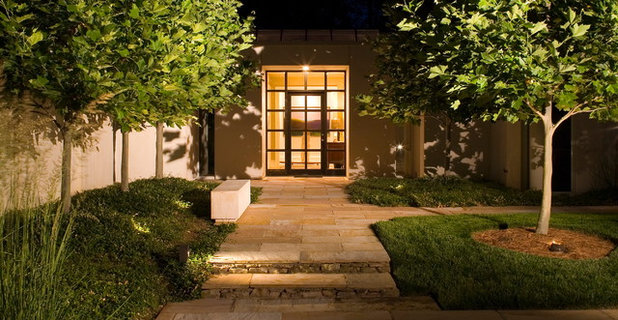
J'Nell Bryson Landscape Architecture
Emerald Ash Borer(
Agrilus planipennis)
What it is: The emerald ash borer is a green beetle whose larval stage disrupts the tree’s ability to carry water and nutrients.
Areas affected: Northeastern United States, recently spreading south to Louisiana and west to Colorado; see the USDA map of confirmed emerald ash borer (EAB) areas.
Trees species it can affect: All types of ash trees including white ash (
Fraxinus americana), green ash (
Fraxinus pennsylvanica), black ash (
Fraxinus nigra) and blue ash (
Fraxinus quadrangulata);
unreported on Texas ash (
Fraxinus albicans,
formerly
F. texensis)
How to spot it: Signs of the disease include prematurely yellowing leaves in the summer followed by dead branches. An arborist will likely confirm the presence of the disease by looking for signs that the beetle has entered the tree bark and burrowed its tunnels beneath the bark.
How to treat it: Diseased trees must be removed and replaced. Suitable replacements for ash trees include maples (
Acer spp)., sycamores (
Platanus spp.) and nut trees in the
Carya genus. Hybrid disease-resistant cultivars of these trees are available and are great deciduous shade trees with fall color.
How to prevent it: Fungicidal injections are on the market to help avoid elm tree infection, but they are not a sure bet.
Shown: American sycamore (
Platanus occidentalis)
trees lining a path in a Charlotte, North Carolina, garden; these trees are native from Nebraska south to Texas and all parts east
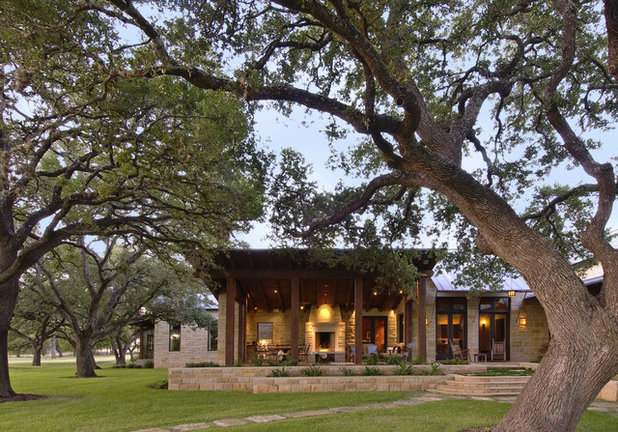
chas architects
Oak Wilt(
Ceratocystis fagacaerum)
What it is: A soil-borne fungus. Beetles help to spread the fungus to new, healthy trees, but the most common way it spreads is through trees with roots. Oak wilt can kill a tree in as little as one growing season, but luckily its spread to nearby oaks is easily controlled.
Areas affected: Midwestern and eastern United States
Trees species it can affect: Mostly oaks in the red oak group, but can also affect species in the white oak group, including the southern live oak (
Quercus virginiana)
How to spot it: A diseased tree will have wilted leaves that turn reddish in the growing season, then quickly die and fall off the tree.
How to treat it: There is no cure, only management of the disease’s effects and prevention of its spread.
How to prevent it: Proper trenching around oaks can reduce the likelihood of its spreading from trees with touching roots. See the Oak Wilt Information Partnership’s pruning guidelines to prevent the spread of oak wilt.
Shown: Healthy, mature southern live oaks in an Austin, Texas, yard
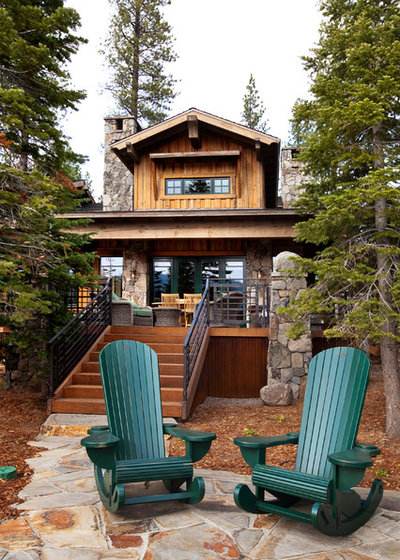
Greenwood Homes
Mountain Pine Beetle(Dendroctonus ponderosae)
What it is: Various types of microbes are spread by the mountain pine beetle. The outbreak is an epidemic in the Rocky Mountain states.
Areas affected: Western United States, especially the Rocky Mountain areas
Trees species it can affect: Species of western pines, including Scots pine (
Pinus sylvestris), ponderosa pine (
Pinus ponderosa), jack pine (
Pinus banksiana) and whitebark pine (
Pinus albicaulis)
How to spot it: A diseased tree will sport red needles and will not show signs of infection until the beetles have already moved on to a new tree.
How to treat it: Early detection is critical to prevent the beetles from spreading. Pheromone baiting, in which pheromones are used to lure the beetles, by a professional may trap the beetles in specific localized areas of forest tracts. Infested trees should be removed.
How to prevent it: Drought conditions and stress can make trees more susceptible to infestation. Providing enough water and building healthy soil are the best organic prevention methods.
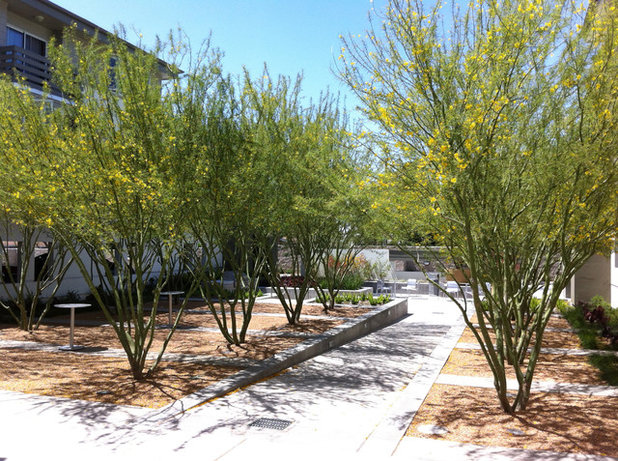
Mark Beall & Associates
Cotton Root Rot, Texas Root Rot(
Phymatotrichopsis omnivora)
What it is: A soil-borne fungus. Cotton root rot, as its name implies, causes trees’ roots to rot as the soil-borne fungus attacks the root system.
Area affected: Southwestern United States
Trees species it can affect: Ash (
Fraxinus spp.), cottonwood (
Populus spp.), elm (
Ulmus spp.), sycamore (
Platanus spp.) and others
How to spot it: Signs of cotton root rot include the onset of wilted leaves followed quickly by dead leaves and branches. “It’s important to note that the fungus that causes cotton root rot is not present in all soil. Rather, it occurs in small pockets,” certified arborist Noelle Johnson says. “Your neighbor may have the fungus present while your soil doesn’t.”
How to treat it: Johnson recommends contacting an arborist for consultation at the first sign of wilted leaves in the warm season.
How to prevent it: Plant resistant species such as mesquite (
Prosopis spp.), palo verde (
Parkisonia spp.) and hackberry (
Celtis spp.).
Shown: An allée of healthy palo verde trees in Los Angeles
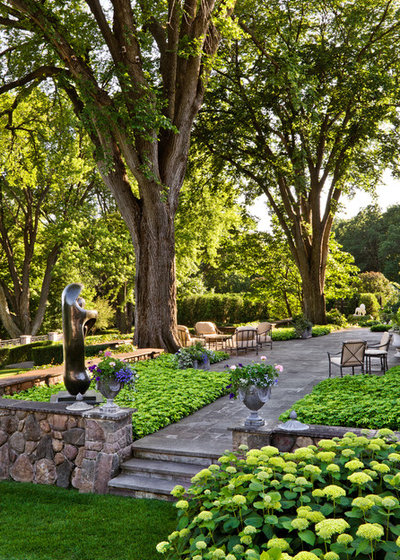
Windsor Companies
Dutch Elm Disease(
Ophiostoma spp.)
What it is: Multiple species of soil-borne fungi. Native elm trees once graced neighborhood streets throughout the Midwest, creating a cathedral-like ceiling of arching branches. Sadly, many thousands of trees have been lost to Dutch elm disease (DED). The disease originates in the soil but is exacerbated by the elm bark beetle (
Scolytus multistriatus) as it moves within the tree and carries the fungus with it.
Area affected: Primarily the midwestern United States
Trees species it can affect: American elm (
Ulmus americana)
How to spot it: Often, the disease is localized to specific branches on the tree. The leaves will first wilt, because the fungus does not allow water to reach the foliage, and then the infected areas will die and the beetle will then help spread the disease to the rest of the tree.
How to treat it: If the disease is detected early, the tree can be saved by aggressive pruning of infected limbs.
How to prevent it: Plant hybrid elm trees that have been created for disease resistance.
Shown: Two mature healthy American elm trees showing their typical arching form
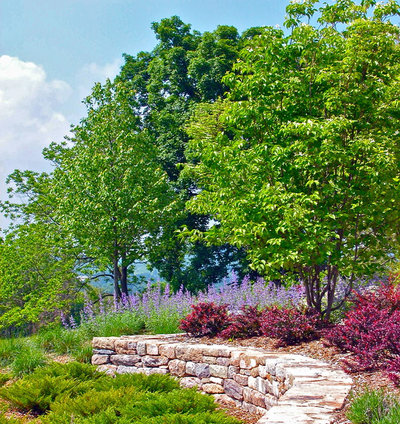
Liquidscapes
Anthracnose
What it is: Various species of related fungi on leaves and twigs of shade trees
Areas affected: Eastern United States
Trees species it can affect: Sycamore (
Platanus spp.), ash (
Fraxinus spp.), oak (
Quercus spp.), privet (
Ligustrum spp.) and dogwood (
Cornus spp.) are most commonly affected.
How to spot it: Signs of anthracnose include dead spots on leaves, distorted and irregular leaf growth, and defoliation of leaves.
How to treat it: Early detection is key, because you can remove and burn infected foliage and twigs. Trees that are overtaken by anthracnose might need to be removed.
How to prevent it: Create good air circulation around susceptible trees, since anthracnose thrives in damp conditions.
Shown: Kousa dogwood (
Cornus kousa) is a well-adapted and noninvasive garden tree that’s more resistant to anthracnose than many native dogwoods. If you prefer to use a cultivated native, consider ‘Appalachian Blush’ flowering dogwood (
Cornus florida ‘Appalachian Blush’), which has shown resistance.
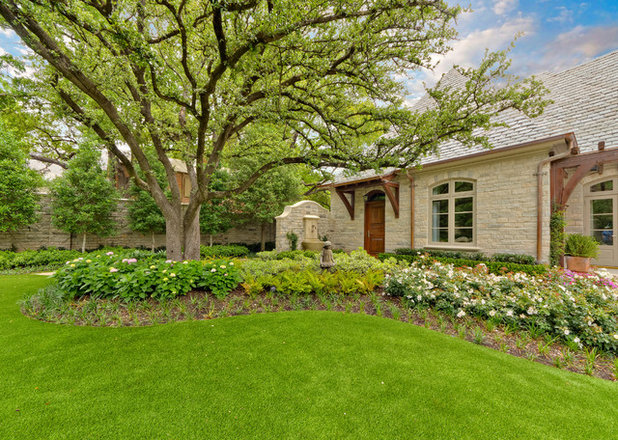
Harold Leidner Landscape Architects
When in doubt, call a professional. If you need help assessing the health of your trees, you should consult an arborist who is certified by the International Society of Arboriculture (ISA). An ISA-certified arborist is like a tree doctor, with training in the health and diseases of trees, and can evaluate your trees and recommend a course of action.
Schedule a consultation with a local arborist. The arborist will visit your landscape, identify any disease present and give you a solid plan for remedying or replacing your trees.
To find a certified arborist, visit the International Society of Arboriculture’s website, search for certified arborists on Houzz or consult a local tree nursery.
You can also follow these guidelines for keeping your trees healthy overall, and one of the best things you can do is have an organic, ecologically minded landscape program that builds healthy soil and uses water judiciously. Additionally, a planting palette of mostly native and hybridized plants that are disease-resistant will be the most resilient.
More 5 Ways to Keep Your Mature Trees Healthy
See more ways to garden on Houzz





